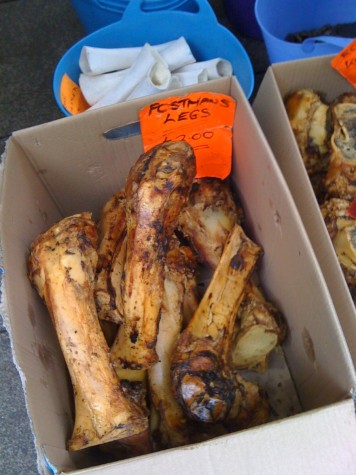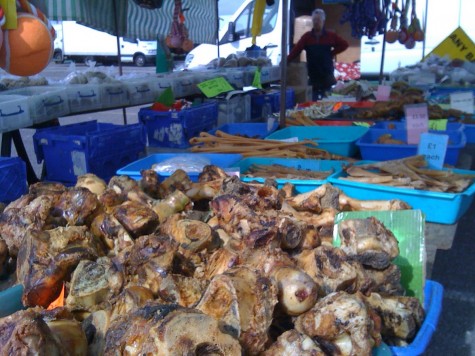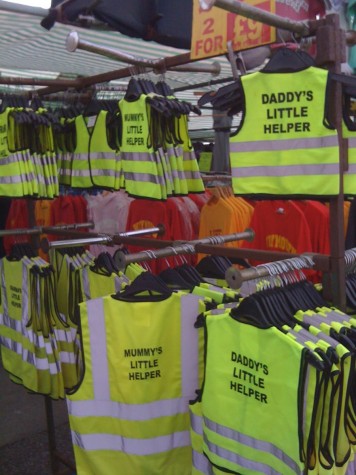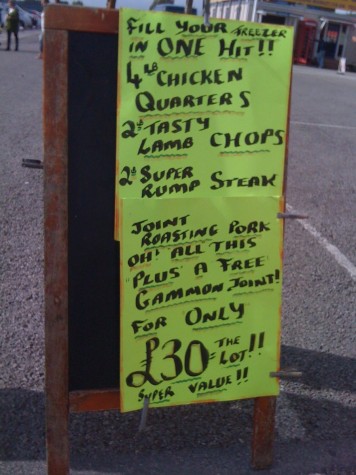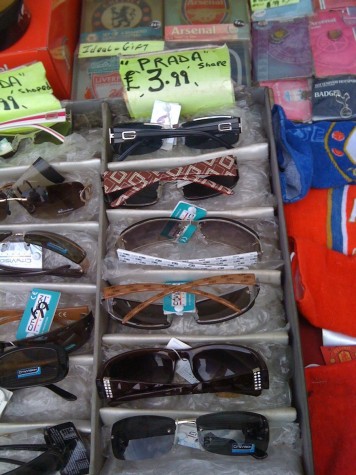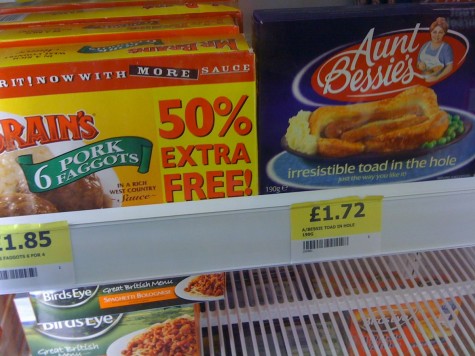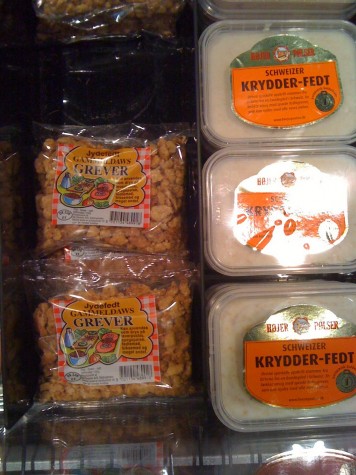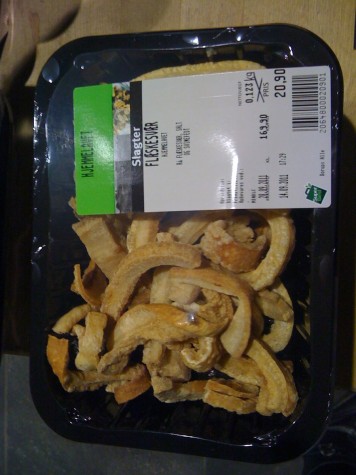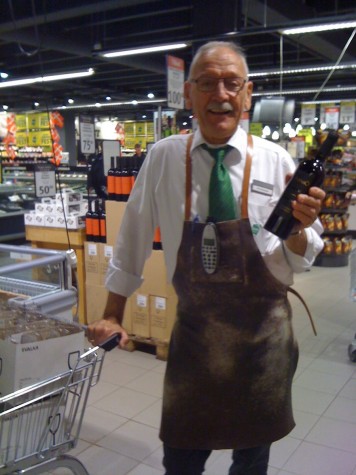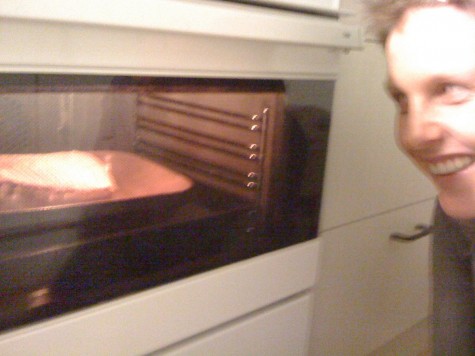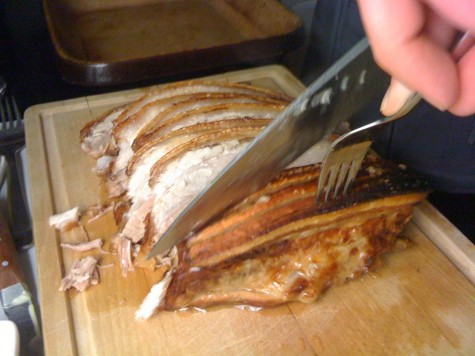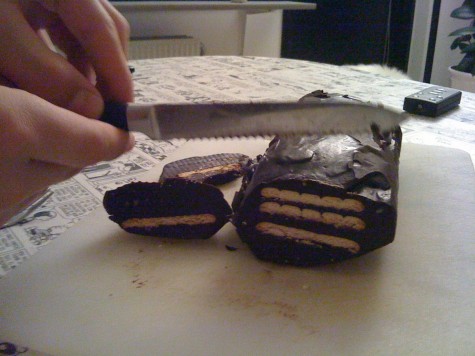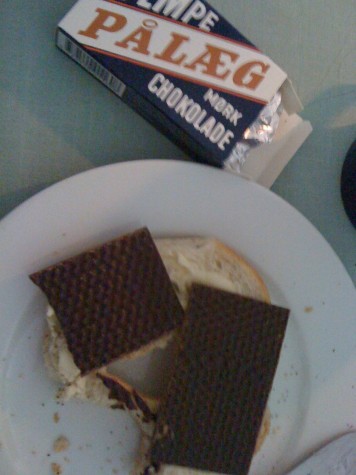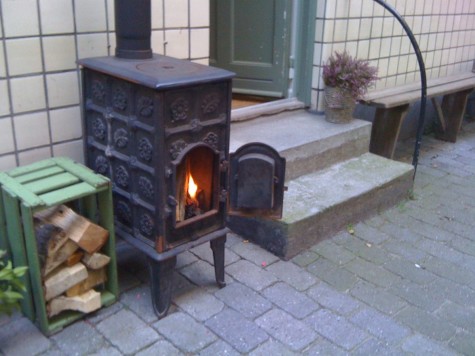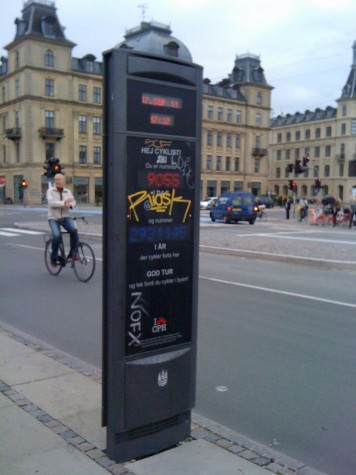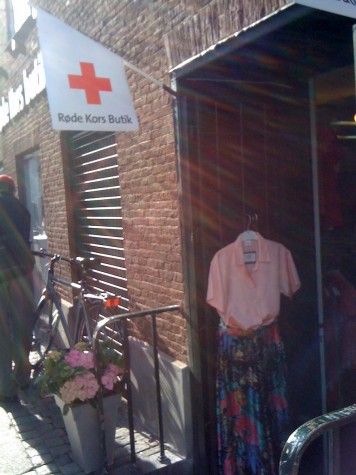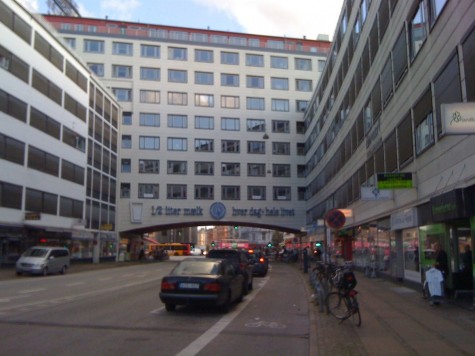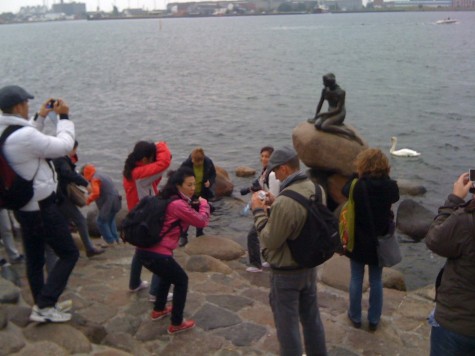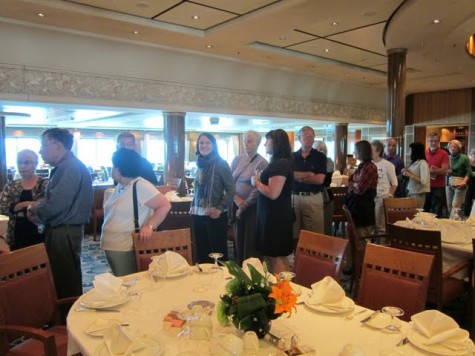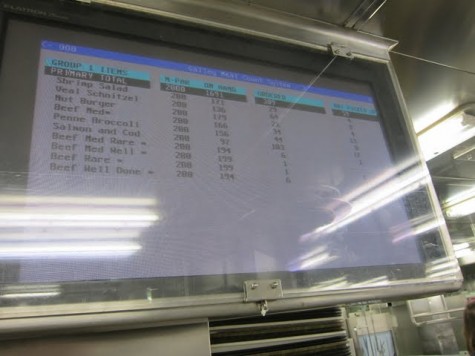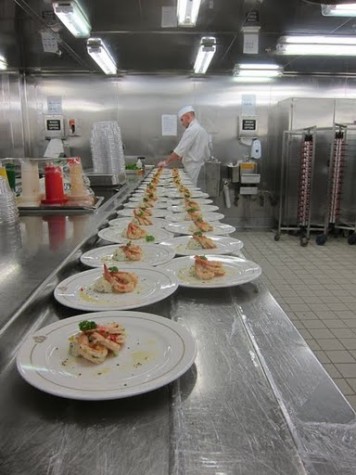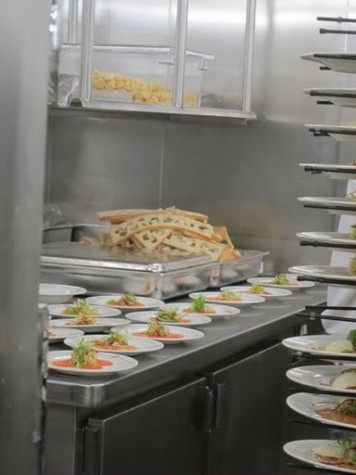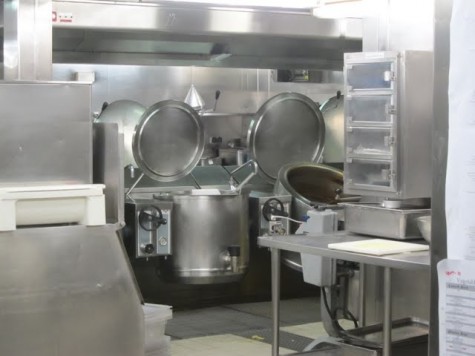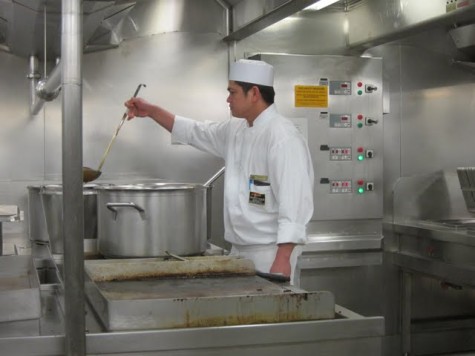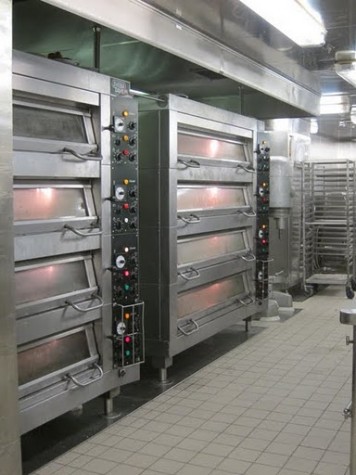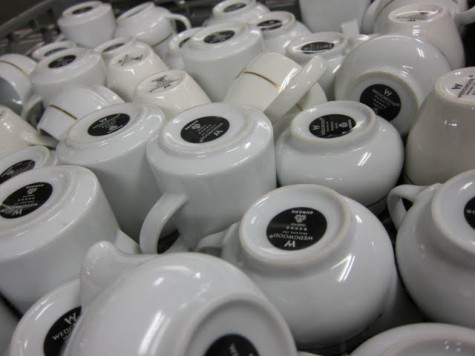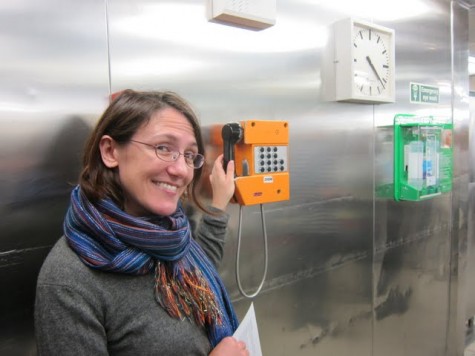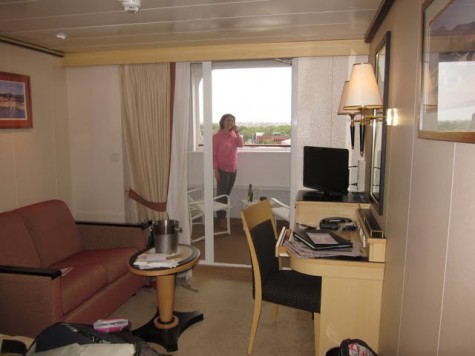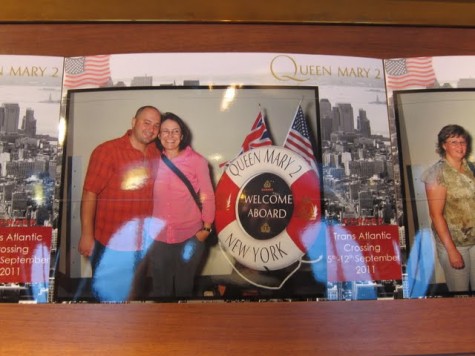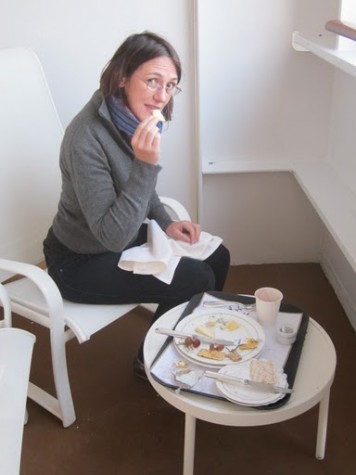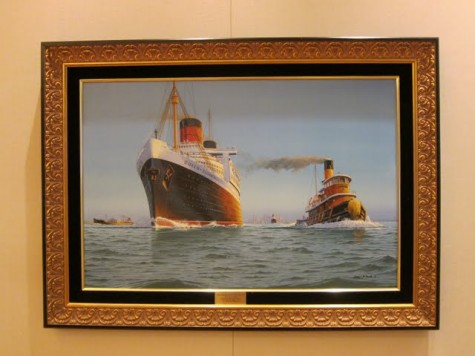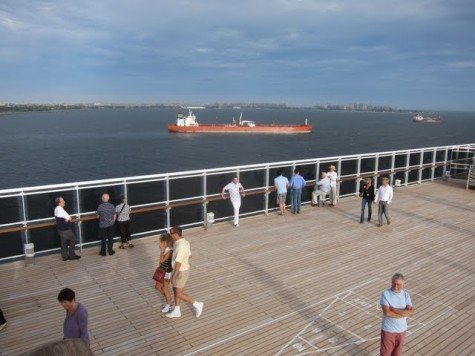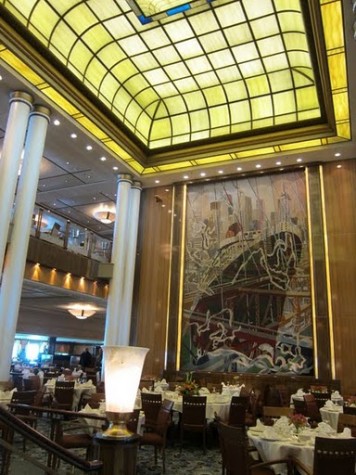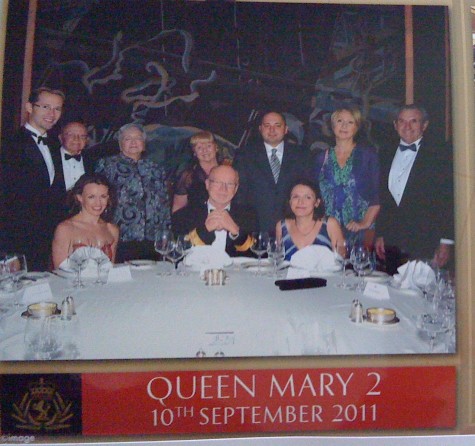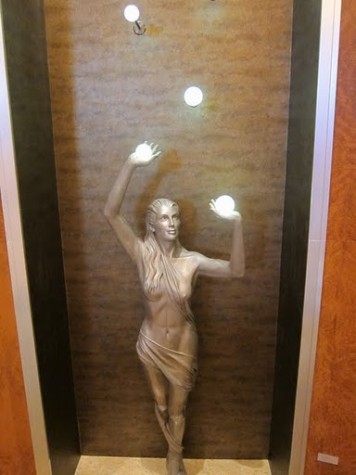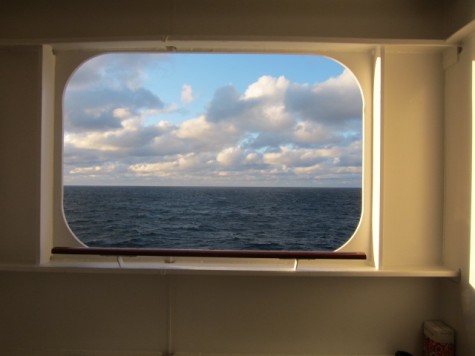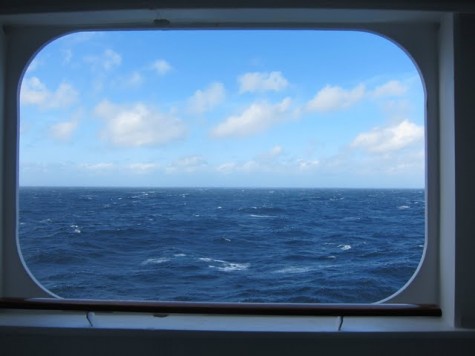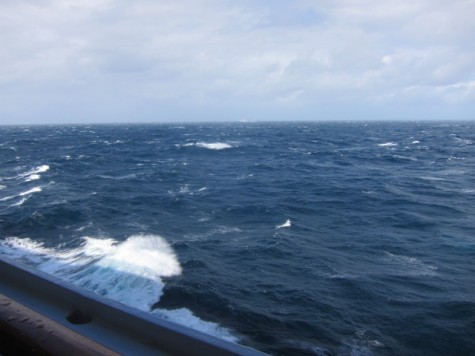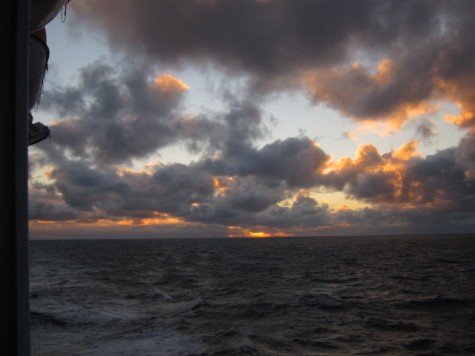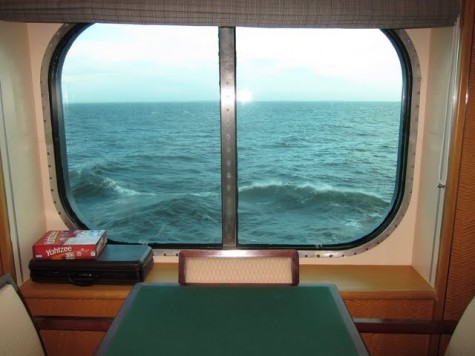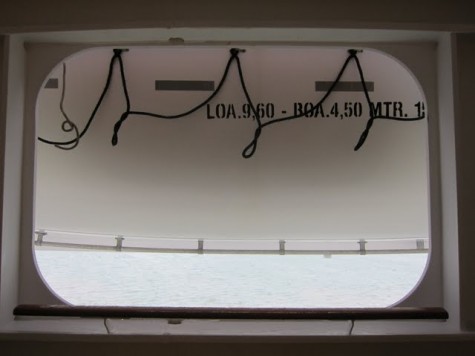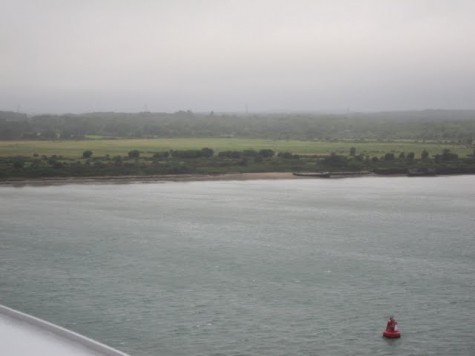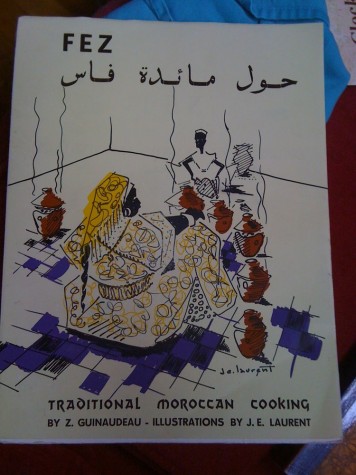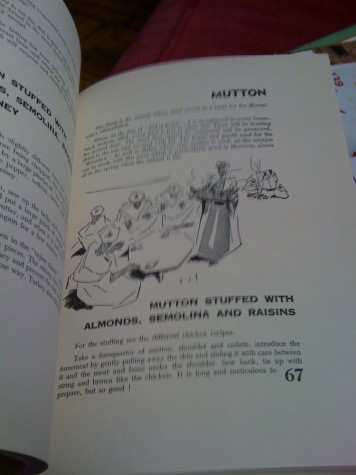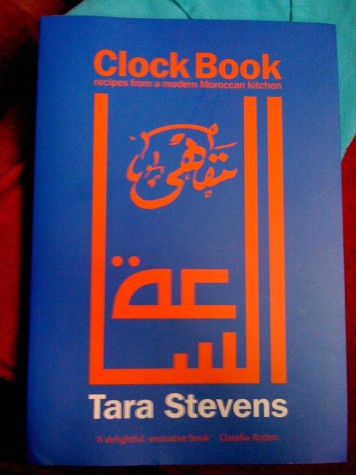(Sorry, no photos. As a setting, imagine any typical Irish pub you’ve been to. It turns out the ones outside of Ireland are actually pretty accurate.)
Coming straight to Ireland from research for my book in Egypt, I was still in comparative-travel mode, and Ireland seemed at once totally unlike Egypt (green, for starters) and strangely similar, especially in its reverence for language. The first book I picked up there, Wild Ireland, just happened to be one of the most marvelously written things I’d read in years, and put me to shame as a guidebook writer.
Midway through my visit, someone told me that shamrock is supposedly derived from an Arabic word, and there’s a whole theory that Arabs traveled to Ireland in some remote century. The little online research I’ve done since suggests this should be filed next to aliens building the Pyramids.
But then we went on the batter–that’s Irish for going on a binge.
Our hostess Amanda lives in Stoneybatter, aka “the Batter,” which, thanks to its two solid blocks of pubs, has given rise to the phrase “on the batter.” So we headed out for a little “sesh” ourselves on Sunday afternoon.
It started reasonably enough: a half-pint of Guinness in an airy old place where the sun shone through the front windows onto old men reading newspapers. Out of that pub and right next door to another. And another. At the next stop, Amanda’s regular, we scored the screened-off snug in the front and imitated proper ladies of the olden days, sitting in a row on our bench, drinking our however-manyeth-by-then half-pint. (Peter was on to full pints.)
Then we went around the corner to the Cobblestone, for its Sunday-afternoon music session. It initially seemed like no great shakes. In the back room, 12-year-olds were playing accordions, and up front, in one corner, a banjo player and a fiddler sat in the designated “musicians’ corner” and played quietly to each other.
As a cultural phenomenon, it was intriguing–here was the bar buzz all around, and a couple of very nimble-fingered people having a private conversation off to one side.
As music, it was less thrilling–the twinkly, lightweight Irish music that starts to rake at the eardrums after a bit. “We call that style ‘diddly-aye’,” Amanda said with a grimace. She was just starting to apologize for this weak cap to our pub crawl when there was a minor ruckus among the men near us.
I’d noticed these men when I walked in. Many were young and wearing dress shirts, which in my bar-going parlance means they’re hideous bankers and best avoided. But these guys were a bit rougher around the edges–more muscled, tenser-looking. Probably also best avoided.
Among the older men with them, one had a fluffy head of strawberry-blond hair and a Kenny Rogers beard. Another wore a black shirt, black jeans, black leather vest, gold earring–the works, with slicked-back hair and a twinkle in his eye.
The jostling among them resolved itself into…a song.
Most of you probably know I cry easily when people sing. Especially when they sing tragic songs about beloved women with skin white as milk dying during the famine. And when the singer’s voice grows a bit ragged in the saddest parts. And when the whole roustabout crew chimes in for the part of the chorus that ends with “in misery.”
Fergus (we knew it was his name because his mates kept murmuring, “Sing, Fergus!” and “Aye, Fergie!” in the pauses) concluded his song of woe and modestly took a sip of beer. I wiped my eyes.
Another man started up. This was the strawberry blond, and he kept his elbows propped on the bar and sang to no one in particular. Before the start of each chorus, he paused ever so briefly to stroke the ends of his prodigious moustache into place.
The diddly-ayes had zipped up their instruments in their padded cases and slunk off. These men sang unaccompanied, just pure tragic words.
Not that the bar fell silent. Just past a tiny partition, life carried on, somewhat rowdily. And even this gang of men had to shush each other repeatedly at the start of each song, in the utterly fruitless way only drunk men can do.
But the whole bar briefly quieted when the third singer opened his mouth. He was the most dangerous-looking of the banker-shirted, his hair short and gleaming with gel, his dark eyes small and focused. He shoved his fists in his jeans pockets, stared into the distance and sang words I couldn’t begin to hear, because the sound itself was so enveloping. He sang from his chest and up into his sinuses, and the resonance in his body carried out into all of us near him–I felt like I was vibrating in tune.
I haven’t heard singing like this outside of the Middle East–a voice honed for nothing less than making the listener sob with longing and regret. I waved at Peter for a proper Kleenex.
When the young man stopped singing, it was almost a relief. There had been so much tension coiled in his voice, so much attention demanded. It was a pleasure to relax back into bar talk and beer sipping for a minute or so.
But the next singer, and no offense to him, was nothing. His voice was clear and nicely rounded–like his shaved-bald head, in fact–and he didn’t falter. One minute in to his song, and I was already craving that coiled-tight singer again.
Fergus, the man who’d started it all, had noticed Amanda taking photos–and me weeping, most likely. “That boy’s probably the best traveller singer in Ireland,” he whispered to Amanda, gesturing to the banker boy now drinking his beer and looking glum.
“You’re not so bad yourself there, Fergus,” she rejoined.
“Ah, but I’m not a traveller,” he said, with a wry smile. “This boy learned his songs from his grandfather.”
A gnomelike man, all beard and silver hair down the back of his overalls, appeared. Leaning on the bar partition, looking down, he sang, in measured tones, about revolution and fighting in the streets. When he was done, he looked up briefly and then returned to his spot down at the non-musical section of the bar. Another young guy, one of the banker-shirts, sang a surprisingly touching Garth Brooks ballad.
And then yer man, as they’d say in Ireland, stood up and sang again. His ballad was about Nan McCann, and the n‘s in her name came out as a steady, swoon-inducing drone. “He’s like a human bagpipe,” Peter said.
Afterward, Fergus gave us a bit more background on the crowd. The man in black, whom Amanda had recognized by now, was Michael Collins, a well-known traveller actor, and he’d just wrapped a film called King of the Travellers, with many of these men–family and friends–in smaller roles. They’d just gotten paid and were flush with cash and accomplishment.
After about a dozen songs, it was over and could not be restarted. The gang had lined up three or four drinks apiece, they were filing out for cigarettes in ever greater numbers, and their wives and sisters had started trickling in–enormous, tattooed women with glittering earrings and peroxided hair in updos. “Drag queens,” Amanda whispered–they were that theatrical.
A fresh batch of diddly-aye pickers took up the musicians’ corner. Fergus slipped on his coat and shook his head. “These players aren’t very generous,” he told us–we wouldn’t hear any more singing tonight.
Peter, Amanda and I drank one last pint and stared at each other in a daze, still resonating from the one man’s song. I gave the traveller crew a careful look–one of them, I swear, could’ve been a Jordanian office manager, in his beige windbreaker and small glasses, with olive skin, a delicate combover and a neatly trimmed moustache. If he’d sung with the others, I imagined, it would’ve been Muhammad Abd al-Wahhab or Farid al-Atrash.
Of course music that makes you weep is universal. But I’ve never felt it that strong outside of the Arab world. If there’s not a real historical story of early Arab migration in Ireland, then I’ll be forced to believe in something like a psychic link. Which is even fruitcakier than aliens at the Pyramids.
I’ll take it–so long as I get to hear that man sing again.
